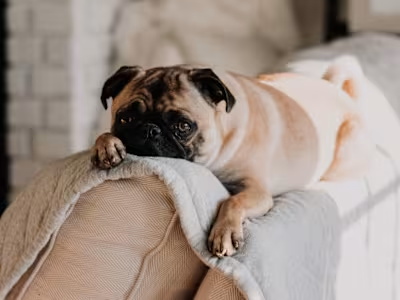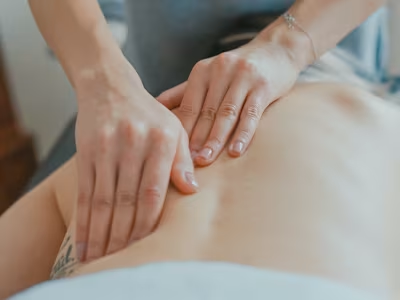3 Essential Puppy Skills Made Easy with Heel Pet Products’ Treat
Like this project
Posted Nov 29, 2023
Heel Pet Products hired me to write a blog incorporating their new treat dispenser and the 3 essential skills all puppies need.
Likes
0
Views
16
Bringing a new puppy home is an exciting time—new adventures, tons of memories, and of course, wild puppy antics!
No matter how old your puppy is when you bring them home, the best time to begin training is now. And training early on will rapidly build the bond between you and your dog.
Read on to learn:
🐶 How to use our brand-new treat dispenser
🐾 3 essential puppy skills to teach
🧡 2 pro tips to take with you
Our New Treat Dispenser Makes Dog Training Easier
There’s nothing worse than holding a pile of treats in your hand or squished in your pocket during a training session—especially when you’re on the go.
Our new treat dispenser clips to your belt, pocket, or leash to allow you to be more hands-on when training your pup.
The dispenser holds 100 bite-sized treats and treats come out with a quick press of the button, falling effortlessly into your palm.
It’s easy to fill, easy-to-use, and it’s a game-changer for positive reinforcement. Your dog will love how quickly you can hand them a treat after a job well done!
3 Essential Puppy Skills to Teach
Here are our top three skills that will help your new puppy adjust to their new home, but before we begin don’t forget to fill and clip on your treat dispenser:
Name Recognition
Teaching your puppy to respond to their name is the first step in effective communication. A puppy’s name can take the place of a “here” or “come” command—and that’s the goal.
Step 1: The easiest way for your puppy to learn their name is to sit in front of them, call their name, and immediately reward them with the treat. After several name-treat cycles, they’ll begin to associate their name with getting a treat.
Step 2: Let your puppy get a little bit distracted. When they do, call their name. If they look or turn in your direction, reward them with a treat. Repeat several times.
Step 3: Start with the name-treat cycle and then throw a single treat away from you, so they go get it. This adds a new layer of difficulty. When they turn your way (even if it’s only slightly) or look at you after finding the treat, call their name and reward them with a few treats when they come.
Step 4: Get a family member or a friend to stand on opposite sides of a room (of to increase difficulty, different rooms or opposite sides of the yard) and call your puppy’s name. And of course, reward, reward, reward!
Down Command
The down command is another that teaches your dog two skills at once:
When a dog knows ‘down’ is an option, they associate it with settling down even when you’re stopped by a friend on a walk.
The down command, if it’s trained to proficiency, can save your dog’s life. For example, if your dog looks like it’s about to make a run for it, telling them ‘down’ might stop them from crossing a busy road.
To teach a puppy ‘down’, you’ll begin with luring them into position. Dispense a treat, hold it near their nose and lead your puppy slowly to the floor.
After luring with a teat several times, slowly fade the lure and switch to a hand signal or verbal cue (or both!).
Introducing the verbal cue is best done after your puppy gets the hang of the new skill. After maybe the fifth time using the lure, once your dog fully lays down with back legs and belly touching the floor, say ‘down.’
Repeat and reward!
Place Command
The place command orients your puppy to their crate as a safe place to settle down. ‘Place’ is also dead useful for you when you’d like to reclaim your space or stop them from jumping on guests.
Step 1: Choose what ‘place’ is – a blanket or mat is most useful since your puppy will know what the mat means no matter where it is.
Step 2: Show your puppy the mat and reward for any attention toward it—sniffing, standing, looking and reward for that! Or you can lure your dog to the mat, reward as soon as they step onto it. Then toss a treat away.
Step 3: Wait to see if your dog comes back to the mat. If they do, reward. If they don’t, it’s best to repeat Step 2 several more times.
Step 4: When they do come to the mat, lure them into a down and reward. Or you can wait for them to offer a down (or use your 'down hand signal). Repeat and reward!
Step 5: Once your pup is familiar with their place, add duration by waiting longer and longer to reward. Work on duration first, then distance, and then you can add distractions.
Place might be a slow skill to learn for some puppies, but it’s worth it in the end.
One final note: Never use your dog’s place as a punishment—the last thing you want is for them to associate anything negative with their safe place.
Pro Tip #1: Regression Is Okay
If your puppy struggles when you advance a skill, regress to the point where they were most successful. Repeat and reward several times and then try to advance the skill once more.
All puppies learn at different rates, so be patient and meet your pup where they’re at.
Pro Tip #2: Keep The Dispenser On You
Keep Heel’s treat dispenser on you throughout the day. Once your puppy gets the swing of things, they’ll begin to offer you good behavior and you need to be ready to reward them for it.
Remember, consistency is key in shaping your puppy’s habits.
Take the next step in your puppy training journey. Visit Heel Pet Products to discover the Treat Dispenser Starter Kit and more.
Happy training!





